The educational materials listed on this page are about Organic Matter.
Soil organic matter consists of three distinctly different parts—living organisms, fresh residues, and well-decomposed residues. These three parts of soil organic matter have been described as the living, the dead, and the very dead. A typical agricultural soil has 1% to 6% organic matter. The benefits of organic matter include improved soil structure, increased infiltration and water-holding capacity, increased cation exchange capacity, and more efficient long-term storage of plant nutrients. Without organic matter, you have no soil to speak of, only a dead mixture of ground-up and weathered rocks. Two comprehensive books to help you build soil organic matter and healthy soil are Building Soils for Better Crops and Managing Cover Crops Profitably.
The living part of soil organic matter includes a wide variety of microorganisms, such as bacteria, viruses, fungi, protozoa, and algae. It even includes plant roots and the insects, earthworms, and larger animals, such as moles, woodchucks, and rabbits that spend some of their time in the soil. The living portion represents about 15% of the total soil organic matter.
Microorganisms, earthworms, and insects feed on plant residues and manures for energy and nutrition, and in the process they mix organic matter into the mineral soil. In addition, they recycle plant nutrients. Organisms such as earthworms and some fungi also help to stabilize soil structure (for example, by producing channels that allow water to infiltrate) and, thereby, improve soil water status and aeration. Plant roots also interact in significant ways with the various microorganisms and animals living in the soil. A multitude of microorganisms, earthworms, and insects get their energy and nutrients by breaking down organic residues in soils.
The fresh residues, or “dead” organic matter, consist of recently deceased microorganisms, insects, earthworms, old plant roots, crop residues, and recently added manures. This part of soil organic matter is the active, or easily decomposed, fraction. This active fraction of soil organic matter is the main supply of food for various organisms—microorganisms, insects, and earthworms— living in the soil. As organic materials are decomposed by the “living,” they release many of the nutrients needed by plants. Organic chemical compounds produced during the decomposition of fresh residues also help to bind soil particles together and give the soil good structure.
Organic molecules directly released from cells of fresh residues, such as proteins, amino acids, sugars, and starches, are also considered part of this fresh organic matter. You can add fresh residues to improve soil health by composting, planting cover crops, and using conservation tillage practices.
The well-decomposed organic matter in soil, the “very dead,” is called humus. Some use the term humus to describe all soil organic matter; some use it to describe just the part you can’t see without a microscope. We’ll use the term to refer only to the well-decomposed part of soil organic matter. Because it is so stable and complex, the average age of humus in soils is usually more than 1,000 years. The already well-decomposed humus is not a food for organisms, but its very small size and chemical properties make it an important part of the soil. Humus holds on to some essential nutrients, storing them for slow release to plants. Humus also can surround certain potentially harmful chemicals and prevent them from causing damage to plants. Good amounts of soil humus can both lessen drainage and compaction problems that occur in clay soils and improve water retention in sandy soils by enhancing aggregation, which reduces soil density, and by holding on to and releasing water.
Showing 1-10 of 14 results
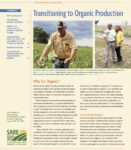
Transitioning to Organic Production
Transitioning to Organic Production lays out many promising conversion strategies, covering typical organic farming production practices, innovative marketing ideas and federal standards for certified organic crop production.
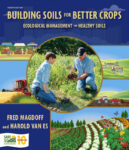
Building Soils for Better Crops
The fourth edition of Building Soils for Better Crops—enhanced and expanded—explains how to use ecological principles to build soil health and boost fertility, yields and overall sustainability.
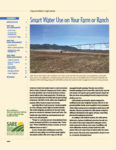
Smart Water Use on Your Farm or Ranch
As producers throughout the nation grow increasingly concerned about water scarcity, farmers, ranchers and agricultural educators are beginning to explore new, conservation-oriented approaches to water use.
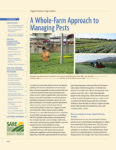
A Whole Farm Approach to Managing Pests
This 16-page bulletin helps producers—and the educators who work with them—use ecological principles across the entire farm to control pests.

Cover Crop Innovators Video Series
Find short video profiles of farmers around the country who are using cover crops on their land.
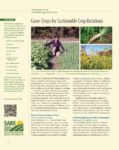
Cover Crops for Sustainable Crop Rotations
Cover crops are one of the best ways to improve soil health, reduce off-farm inputs and protect natural resources. Find a wealth of educational materials developed out of decades of SARE-funded cover crop research.
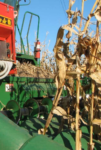
Cover Crops, Soil Health Principles and Maximizing Yields
Learn about basic soil health principles and how cover crops are key to making those happen on your farm.
Cover Crops Seed Selection and Planting
Whether you are new to cover crops or an advanced user, hear from two experts on how they chose and seed their cover crops.

Adding Cover Crops to a No-Till System
South Dakota farm manager Dan Forgey has improved soil quality and the bottom line by successfully introducing cover crops to his long-term no-till system.
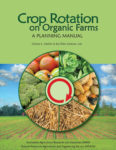
Crop Rotation on Organic Farms
Crop rotation strategies that can be applied under various field conditions for conventional or organic crops to improve soil quality and health, and manage pests, diseases, and weeds